
Find Help
More Items From Ergsy search
-

What is Breast augmentation?
Relevance: 100%
-
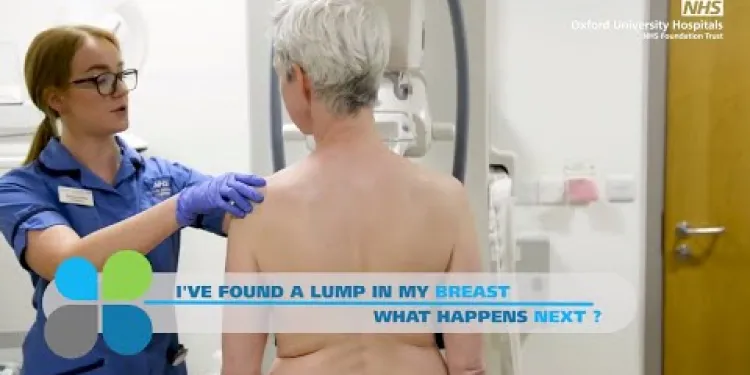
I've found a lump in my breast - What happens next? The breast diagnostic clinic
Relevance: 41%
-

AI Breast Cancer Screening in the UK
Relevance: 40%
-
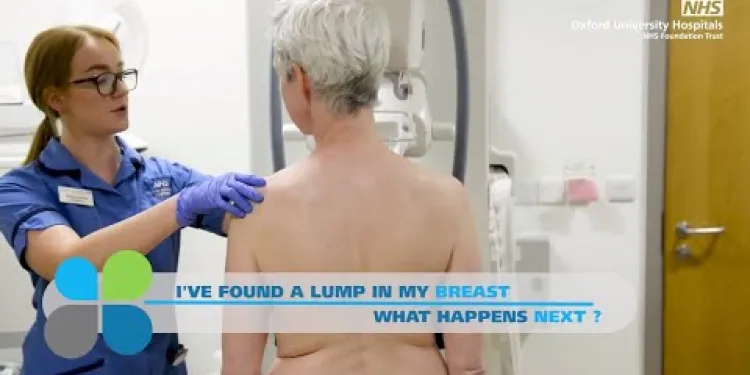
I've found a lump in my breast - What happens next? The breast diagnostic clinic
Relevance: 40%
-

NHS breast cancer screening
Relevance: 40%
-

Evidence-Based Interventions: breast reduction
Relevance: 40%
-

Breast cancer: testing and treatment | NHS
Relevance: 39%
-

Tower Hamlets breast screening programme
Relevance: 38%
-

Breasts and Mastitis
Relevance: 38%
-

About Breast cancer - signs and symptoms | NHS
Relevance: 37%
-
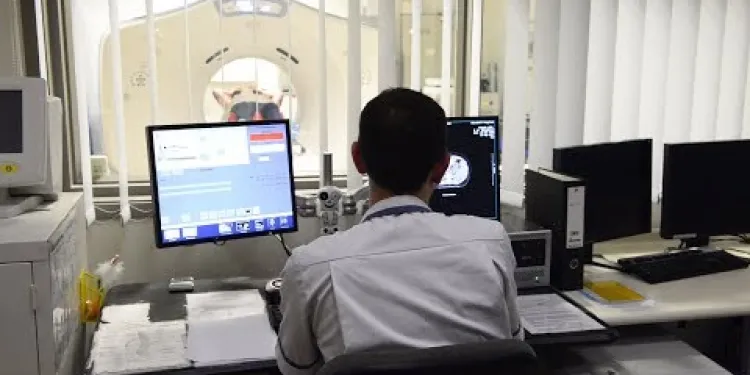
Having radiotherapy for breast cancer - 3 Videos
Relevance: 37%
-

Can I have a mammogram if I have breast implants?
Relevance: 37%
-

Other Things You Need to Know About Breast Screening
Relevance: 35%
-

Treating breast pain | United Lincolnshire Hospitals NHS Trust
Relevance: 35%
-

Can men have mammograms?
Relevance: 20%
-

What are the benefits of regular mammograms?
Relevance: 20%
-

How reliable are mammograms?
Relevance: 19%
-

What happens during a mammogram?
Relevance: 19%
-

Is a mammogram painful?
Relevance: 19%
-

Are there any risks associated with mammograms?
Relevance: 18%
-

What is a mammogram?
Relevance: 18%
-

How often should I get a mammogram?
Relevance: 18%
-

Mammograms
Relevance: 18%
-

Are mammograms free on the NHS?
Relevance: 17%
-

What if my mammogram results are abnormal?
Relevance: 17%
-

At what age should I start having mammograms?
Relevance: 17%
-

How do I prepare for a mammogram?
Relevance: 16%
-
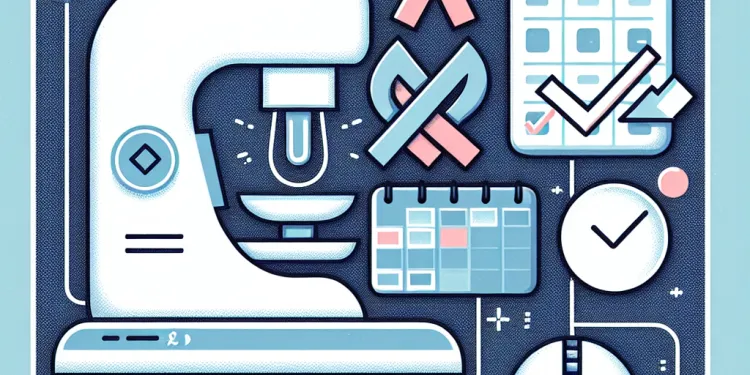
How do I book a mammogram?
Relevance: 14%
-
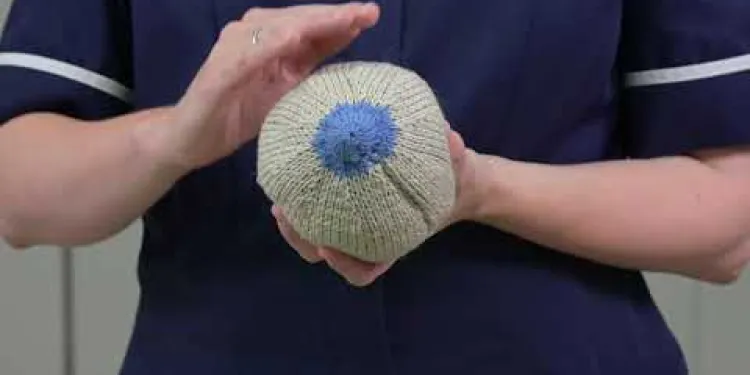
Hand expressing
Relevance: 13%
-

Health Screenings You Should Know About
Relevance: 12%
-
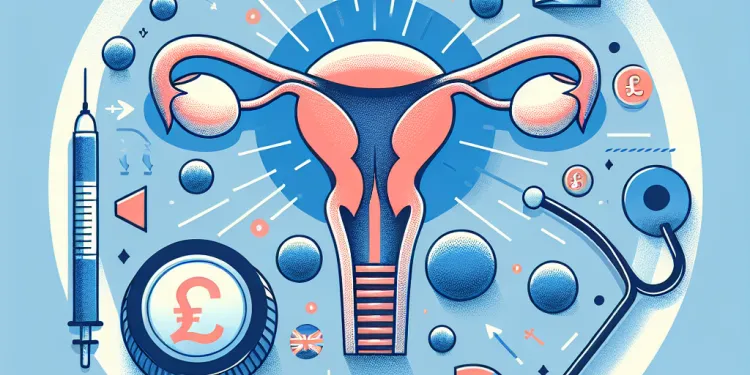
What are the symptoms of testicular cancer?
Relevance: 10%
-

Raising awareness of ovarian cancer
Relevance: 9%
-
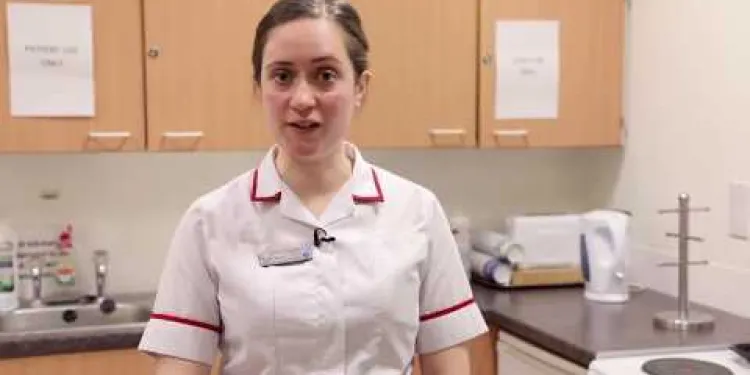
Stroke - Speech and Language Therapist's Experience
Relevance: 8%
-

How can I verify the camera's field of view?
Relevance: 8%
-

Does the HMRC Employer Bulletin cover changes in employment law?
Relevance: 8%
-

What role does technology play in infrastructure maintenance?
Relevance: 8%
-

Can I breastfeed immediately after a Caesarean section under spinal anaesthesia?
Relevance: 8%
-

What health risks are associated with obesity?
Relevance: 8%
-

Lymphoedema: Philippa's story | NHS
Relevance: 7%
-

Can I get more than the full basic State Pension?
Relevance: 7%
What is Breast Augmentation?
Breast augmentation, commonly known as a "boob job," is a surgical procedure designed to enhance the size, shape, or fullness of a woman's breasts. This cosmetic surgery has gained popularity over the years due to its ability to improve body image and boost self-confidence. In the UK, it is one of the most frequently performed cosmetic surgeries.
Procedure Overview
Breast augmentation involves the placement of implants behind the breast tissue or chest muscle. There are two main types of implants used: silicone and saline. Silicone implants are filled with a gel that feels more like natural breast tissue, while saline implants are filled with sterile salt water. The choice of implant can depend on the patient's body type, the desired increase in breast size, and the surgeon's recommendations.
The procedure usually begins with the administration of general anesthesia, ensuring the patient is asleep and comfortable. Afterward, the surgeon makes an incision in one of three areas: under the breast (inframammary), around the nipple (periareolar), or in the armpit (transaxillary). The chosen method affects the placement and visibility of scars post-surgery.
Recovery and Aftercare
After breast augmentation surgery, recovery time can vary but typically includes a few weeks of limited activity. Patients might experience swelling, bruising, and discomfort, which can be managed with prescribed pain medication. It's crucial to follow the surgeon’s aftercare instructions, which usually include wearing a special support bra to aid healing and maintaining follow-up appointments to monitor the progress.
Most patients can return to normal activities, such as work and light exercise, within a week or two, but it's advisable to avoid strenuous physical activities for about six weeks. It's also important to note that while scars are permanent, they tend to fade over time with proper care.
Risks and Considerations
As with any surgical procedure, breast augmentation carries potential risks, which can include infection, changes in nipple sensation, implant leakage or rupture, and the formation of scar tissue around the implant (capsular contracture). Thoroughly discussing these risks with a qualified surgeon is essential before proceeding.
Additionally, breast implants are not considered lifetime devices. It is possible that in the future, replacement or revision surgery may be necessary, especially if complications arise or personal aesthetic preferences change.
Choosing a Surgeon
For those considering breast augmentation in the UK, selecting a qualified and experienced surgeon is crucial. Potential candidates should seek a professional who is registered with the General Medical Council (GMC) and ideally a member of the British Association of Aesthetic Plastic Surgeons (BAAPS). Detailed consultations allow individuals to discuss their goals, understand the procedure, and make informed decisions about their care.
What is Breast Augmentation?
Breast augmentation, also known as a "boob job," is a type of surgery. It makes a woman's breasts bigger or changes their shape. Many women choose to have this surgery because it can make them feel better about how they look. In the UK, it is a very common type of surgery.
Procedure Overview
In breast augmentation, doctors put implants inside the breasts. There are two main types of implants: silicone and saline. Silicone ones feel more like real breasts. Saline ones are filled with salty water. The type of implant chosen depends on the person's body and the change they want. The doctor will help decide which is best.
The surgery begins with medicine that makes the person sleep. This is called general anesthesia. The doctor then makes a cut in one of three places: under the breast, around the nipple, or in the armpit. Where the cut is made can affect where the scars are.
Recovery and Aftercare
After the surgery, it usually takes a few weeks to get better. A person might feel sore and see some swelling or bruising. Doctors can give medicine to help with pain. It's important to listen to the doctor's advice after surgery. This often includes wearing a special bra to support healing and having check-ups.
People often go back to normal activities like work in one or two weeks. But it's important not to do any heavy activities for about six weeks. Scars will stay, but they usually get lighter over time.
Risks and Considerations
All surgeries have risks. Breast augmentation can lead to problems like infection, feeling different in the nipples, or implants breaking. Sometimes, scar tissue forms around an implant, which can be a problem. It's important to talk about these risks with a doctor before deciding to have the surgery.
Breast implants do not last forever. Sometimes, more surgery might be needed later if something goes wrong or if a person wants a change.
Choosing a Surgeon
If thinking about breast augmentation in the UK, finding the right surgeon is very important. Look for a surgeon who is registered with the General Medical Council (GMC) and is a member of the British Association of Aesthetic Plastic Surgeons (BAAPS). Talking with the surgeon helps people understand the surgery and make a good choice.
Frequently Asked Questions
What is breast augmentation?
Breast augmentation is a surgical procedure to increase breast size, often through the use of implants or fat transfer.
Who is a good candidate for breast augmentation?
Good candidates are individuals in good health, with realistic expectations, looking to enhance their breast size or shape.
What are the different types of breast implants?
The two main types of breast implants are saline and silicone gel implants.
How long do breast implants last?
Breast implants typically last 10-20 years, but many factors can influence their longevity.
What is the recovery time after breast augmentation surgery?
Most patients return to normal activities within a few weeks, but full recovery can take several months.
Are there risks associated with breast augmentation?
Yes, risks can include infection, implant leakage, changes in nipple sensation, and more.
Can breast augmentation affect breastfeeding?
Some women can still breastfeed after breast augmentation, but it may affect milk production.
What should I expect during the breast augmentation procedure?
The procedure typically takes 1-2 hours and involves anesthesia, incisions, and implant placement.
How should I prepare for breast augmentation surgery?
Preparation may include medical evaluations, avoiding certain medications, and arranging for post-surgery care.
What is the difference between breast augmentation and breast lift?
Breast augmentation focuses on increasing size, while a breast lift reshapes and raises sagging breasts.
What is fat transfer breast augmentation?
It involves using a patient's own fat, harvested from other body parts, to enhance breast size.
Can breast augmentation fix asymmetry?
Yes, breast augmentation can help correct size and shape asymmetries in the breasts.
Will breast implants feel natural?
Implants may not feel exactly like natural tissue, but silicone implants typically feel more like natural breast tissue.
How visible will the scars be after breast augmentation?
Scars are usually discreetly placed and fade over time, but their visibility can vary.
What should I do if I experience complications after surgery?
Contact your surgeon immediately if you experience unusual symptoms or complications.
How do I choose the right size for breast implants?
This decision should be made with your surgeon, considering your body type and aesthetic goals.
Can I undergo breast augmentation if I have a family history of breast cancer?
Potentially, but it's important to discuss your family history with your surgeon and undergo appropriate screenings.
Do breast implants need to be replaced periodically?
Implants do not need routine replacement unless complications arise or cosmetic changes are desired.
How costly is breast augmentation?
Costs vary widely based on location, surgeon, and specifics of the procedure, generally ranging from $5,000 to $10,000.
Is breast augmentation covered by insurance?
It is typically considered cosmetic and not covered by insurance, though reconstruction post-mastectomy may be.
What is breast augmentation?
Breast augmentation is a way to make breasts bigger. This is done by surgery, where a doctor puts something called an implant inside the breast. Some people do this because they want their breasts to be larger.
Tools to help understand:
- Use pictures to see what breast augmentation looks like.
- Watch videos that explain how the surgery works.
- Talk to a doctor to ask questions and learn more.
Breast augmentation is an operation to make breasts bigger. Doctors do this by using special inserts called implants or by using fat from another part of your body.
Who is a good candidate for breast enlargement?
Breast enlargement, or getting larger breasts, is not for everyone. Here are some things to think about:
- You should be healthy and not have serious medical problems.
- You might want your breasts to be bigger or look different.
- You need to be old enough to make this choice yourself.
If you are thinking about breast enlargement, it is a good idea to talk to a doctor. They can give you advice and help you decide.
Using picture books or videos might help you understand better. You can also talk to someone you trust about how you feel. Remember, it's important to feel happy and comfortable with your body.
Good candidates are people who are healthy and have a clear idea of what they want. They want to make their breasts bigger or change their shape.
What types of breast implants are there?
Here are the types of breast implants:
- Saline implants: Filled with salt water.
- Silicone implants: Filled with soft gel.
To understand better, you can:
- Look at pictures to see what they look like.
- Ask someone to explain it to you.
- Use a video that talks about implants.
There are two kinds of breast implants: saline implants and silicone gel implants.
How long do breast implants last?
Breast implants are not forever. They usually last about 10 to 15 years. Sometimes they can last longer, but sometimes they need to be replaced sooner.
If you have implants, it's important to visit your doctor regularly to make sure everything is okay. Your doctor can help you know when it might be time to change your implants.
Having a calendar to mark doctor visits might help. You can also use reminders to keep track of when your implants might need checking.
Breast implants usually last between 10 and 20 years. But there are things that can make them last for a shorter or longer time.
How long does it take to get better after breast surgery?
Most people can get back to their normal activities in a few weeks. But it might take a few months to feel completely better.
Is breast surgery safe?
Yes, there can be some risks. These include infection, the implant leaking, changes in how your nipples feel, and more.
Can breast implants affect breastfeeding?
Some people wonder if having breast implants can change how they breastfeed. Breastfeeding is when a mom feeds her baby milk from her breast.
If you have breast implants, you can still try to breastfeed your baby. Some moms with implants do not have any problems. But for others, it might be a bit harder.
To get help, you can talk to a doctor or a breastfeeding expert. They can give you tips and ideas to help you breastfeed your baby with implants.
Some women can still breastfeed after getting breast implants, but it might change how much milk they make.
What happens during breast surgery?
Here is what you can expect:
- You will go to sleep with a special medicine so you do not feel anything.
- The doctor will make a small cut, usually under your breast or around your nipple.
- They will put in the implants to make your breasts bigger.
- The doctor will close the cut with stitches.
- When you wake up, there might be a bandage on your chest.
It’s okay to ask the doctor or nurse questions. You can also talk about any worries you might have. They are there to help you feel safe and comfortable.
This is what usually happens:
The doctor takes 1 to 2 hours to do the surgery.
You will be asleep or not feel anything because of special medicine called anesthesia.
The doctor will make small cuts, called incisions.
Then, the doctor will put something inside your body, called an implant.
Tip: If you find this hard to read, you can ask someone to read it with you. You can also use a tool that reads text out loud. This can help you understand better.
Getting Ready for Breast Enlargement Surgery
Here’s how to get ready for your breast enlargement surgery:
- Talk to Your Doctor: Ask your doctor any questions. They will help you understand the surgery.
- Make a Plan: Arrange for someone to drive you to and from the hospital.
- Healthy Eating: Eat healthy food and drink plenty of water before surgery.
- Avoid Smoking: Don’t smoke before your surgery. Smoking can affect healing.
- Pack a Bag: Bring comfortable clothes to the hospital.
Use a calendar to note down important dates. You can also ask someone to help remind you what steps to follow.
Before surgery, you might have check-ups with a doctor. You will need to stop taking some medicines. Plan for someone to help you after the surgery.
What is the difference between breast augmentation and breast lift?
Breast augmentation makes breasts bigger using implants.
Breast lift changes the shape and position of breasts without making them bigger.
If you want help reading this, you can ask someone you trust or use text-to-speech tools that read out loud.
A breast augmentation makes breasts bigger. A breast lift makes saggy breasts look higher and firmer.
What is moving fat to make breasts bigger?
This means using a person's own body fat to make their breasts bigger. The fat is taken from other parts of their body.
Can breast surgery make both breasts look the same?
Sometimes, one breast is a different size or shape than the other. This is called asymmetry. Breast surgery can help make both breasts look more alike.
It's good to talk to a doctor. They can explain how the surgery works and if it is right for you.
If you find reading hard, ask someone you trust to help you understand this information better. You can also use tools like text-to-speech to listen to the text.
Yes, getting breast implants can help make both breasts the same size and shape.
Will breast implants feel natural?
Sometimes people get breast implants to change the way their chest looks.
If you are thinking about breast implants, you might wonder: "Will they feel like real breasts?"
Here are some important things to know:
- Breast implants can feel different from real breasts. It depends on the type of implants and your body.
- Some people say implants feel soft and natural, but others feel a difference.
- Talking to a doctor can help you understand what to expect.
If you have questions, using tools like images or videos can help you learn more. Talking to trusted adults or doctors is also a good idea. They can explain things in a way that makes sense to you.
Implants might not feel just like real body tissue. But silicone implants usually feel more like real breast tissue.
Will I see the scars after breast surgery?
Scars are often hidden and get lighter as time goes by, but some scars can be easier to see than others.
What do I do if I feel unwell after my operation?
If you don't feel well after your operation, tell a grown-up. They can help you call the doctor.
Here are some things to ask an adult to help you with:
- Look for any redness, swelling, or pain where you had surgery.
- If you have a fever, tell someone right away.
- If you feel dizzy or sick, get help quickly.
Ask someone to use a phone or computer to learn more. They can show you pictures and videos to help you understand. Remember, asking for help is a good thing!
Tell your doctor right away if you feel sick or something feels wrong.
How do I pick the right size for breast implants?
Choosing the right size for breast implants can be hard. Here are some tips to help:
- Talk to a Doctor: A doctor can give you good advice on what size will look and feel best for you.
- Think About Your Body: Choose a size that matches your body shape and how you want to look.
- Try Different Sizes: Some doctors let you try on special bras with different sizes to see what feels right.
- Look at Pictures: See pictures of people with different sizes to help you decide.
- Use a 3D Tool: Some places have 3D tools that show how different sizes will look on you.
These tips can help you pick the right size. Remember, it's important to choose what feels best for you!
Talk with your doctor about what you want and what is best for your body.
Can I have breast surgery if breast cancer runs in my family?
It is important to talk to a doctor. They can help you understand if the surgery is safe for you.
Here are some helpful tips:
- Ask lots of questions to your doctor.
- Write down what the doctor says so you can remember.
- Bring a friend or family member to help you during the appointment.
If you have any worries, always talk to a doctor. They can give you the best advice.
It might be possible, but it's a good idea to talk about your family's health history with your doctor. They can help you find out what tests you might need.
Do breast implants need changing regularly?
Sometimes breast implants might need to be changed. It's like when toys get old or a bike tire needs fixing. If you have breast implants, they might need to be checked or changed after some years.
Ask a doctor for help. They can explain when and why changes are needed. Having regular check-ups with a doctor is a good idea.
Tools like calendars or reminders on your phone can help you remember doctor visits.
Implants usually stay in place unless there is a problem or if someone wants to change the way they look.
How much does breast surgery cost?
The cost of surgery can change a lot depending on where you are, who the doctor is, and what kind of surgery it is. It usually costs between $5,000 and $10,000.
If reading is hard, you can try using tools like text-to-speech apps, which read the words out loud, or picture dictionaries that show a picture for each word. These can help make reading easier.
Will my insurance pay for breast surgery?
Many people wonder if their insurance will pay for breast surgery. Here is what you need to know:
1. Ask your insurance company: Call them to find out if they cover breast surgery. They can give you the best answer.
2. Medical reasons: Sometimes insurance pays if the surgery is needed for health reasons. For example, if it helps with pain or other medical issues.
3. Cosmetic reasons: If the surgery is just to change the way you look, insurance usually does not pay for it.
4. Helpful tools: You can write down questions to ask your insurance. A family member or a friend can help you understand what they say.
Remember, it's always good to check with your insurance to know for sure.
This is usually seen as a beauty choice, so health insurance doesn't pay for it. But if someone needs it after breast surgery because of cancer, insurance might help.
Useful Links
- Ergsy carfully checks the information in the videos we provide here.
- Videos shown by Youtube after a video has completed, have NOT been reviewed by ERGSY.
- To view, click the arrow in centre of video.
- Most of the videos you find here will have subtitles and/or closed captions available.
- You may need to turn these on, and choose your preferred language.
- Go to the video you'd like to watch.
- If closed captions (CC) are available, settings will be visible on the bottom right of the video player.
- To turn on Captions, click settings .
- To turn off Captions, click settings again.
More Items From Ergsy search
-

What is Breast augmentation?
Relevance: 100%
-

I've found a lump in my breast - What happens next? The breast diagnostic clinic
Relevance: 41%
-

AI Breast Cancer Screening in the UK
Relevance: 40%
-

I've found a lump in my breast - What happens next? The breast diagnostic clinic
Relevance: 40%
-

NHS breast cancer screening
Relevance: 40%
-

Evidence-Based Interventions: breast reduction
Relevance: 40%
-

Breast cancer: testing and treatment | NHS
Relevance: 39%
-

Tower Hamlets breast screening programme
Relevance: 38%
-

Breasts and Mastitis
Relevance: 38%
-

About Breast cancer - signs and symptoms | NHS
Relevance: 37%
-

Having radiotherapy for breast cancer - 3 Videos
Relevance: 37%
-

Can I have a mammogram if I have breast implants?
Relevance: 37%
-

Other Things You Need to Know About Breast Screening
Relevance: 35%
-

Treating breast pain | United Lincolnshire Hospitals NHS Trust
Relevance: 35%
-

Can men have mammograms?
Relevance: 20%
-

What are the benefits of regular mammograms?
Relevance: 20%
-

How reliable are mammograms?
Relevance: 19%
-

What happens during a mammogram?
Relevance: 19%
-

Is a mammogram painful?
Relevance: 19%
-

Are there any risks associated with mammograms?
Relevance: 18%
-

What is a mammogram?
Relevance: 18%
-

How often should I get a mammogram?
Relevance: 18%
-

Mammograms
Relevance: 18%
-

Are mammograms free on the NHS?
Relevance: 17%
-

What if my mammogram results are abnormal?
Relevance: 17%
-

At what age should I start having mammograms?
Relevance: 17%
-

How do I prepare for a mammogram?
Relevance: 16%
-

How do I book a mammogram?
Relevance: 14%
-

Hand expressing
Relevance: 13%
-

Health Screenings You Should Know About
Relevance: 12%
-

What are the symptoms of testicular cancer?
Relevance: 10%
-

Raising awareness of ovarian cancer
Relevance: 9%
-

Stroke - Speech and Language Therapist's Experience
Relevance: 8%
-

How can I verify the camera's field of view?
Relevance: 8%
-

Does the HMRC Employer Bulletin cover changes in employment law?
Relevance: 8%
-

What role does technology play in infrastructure maintenance?
Relevance: 8%
-

Can I breastfeed immediately after a Caesarean section under spinal anaesthesia?
Relevance: 8%
-

What health risks are associated with obesity?
Relevance: 8%
-

Lymphoedema: Philippa's story | NHS
Relevance: 7%
-

Can I get more than the full basic State Pension?
Relevance: 7%


